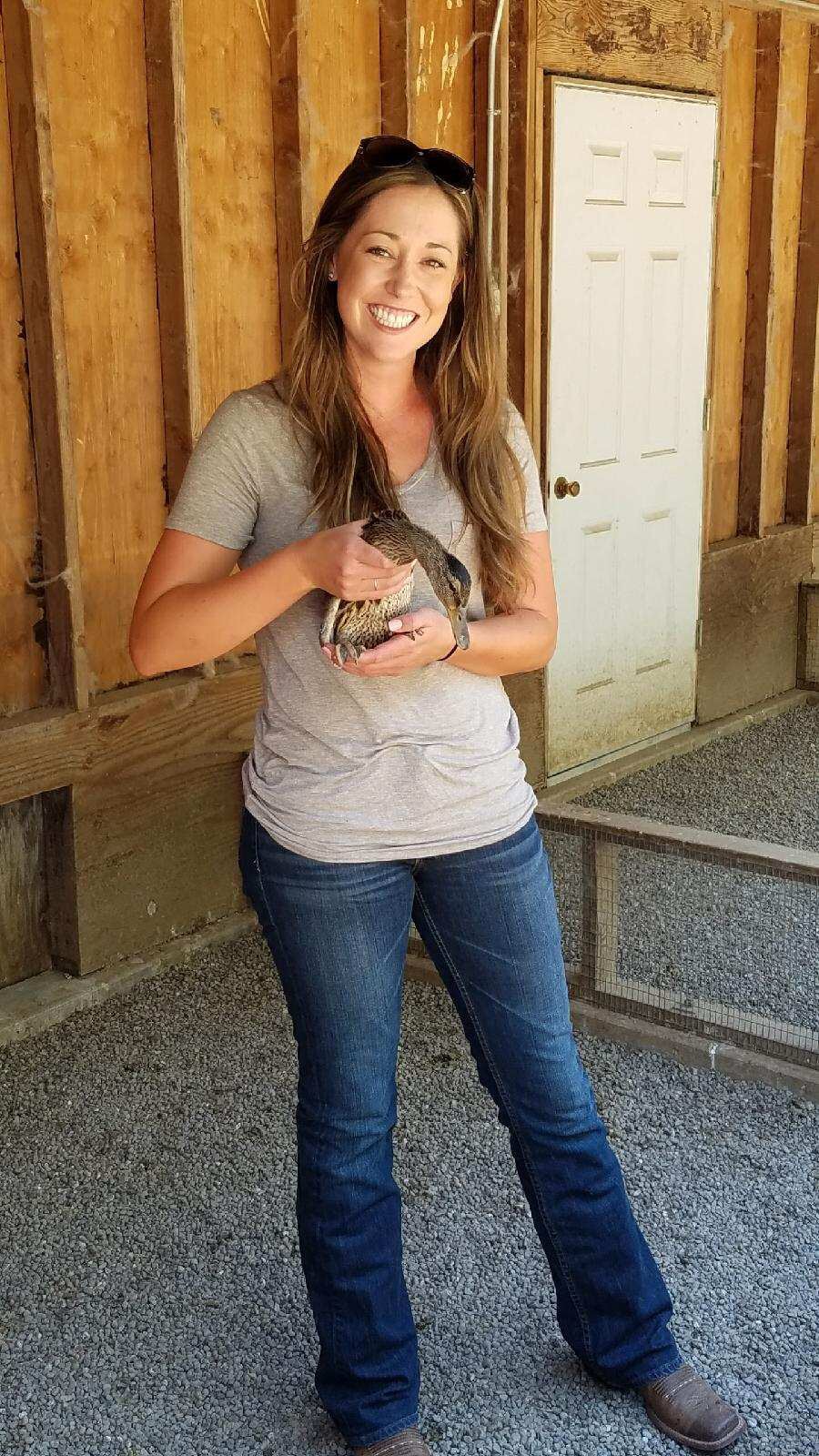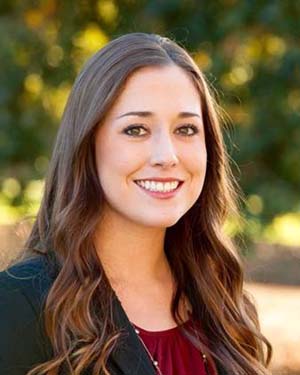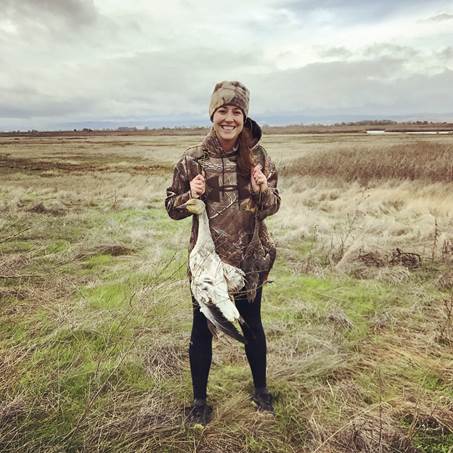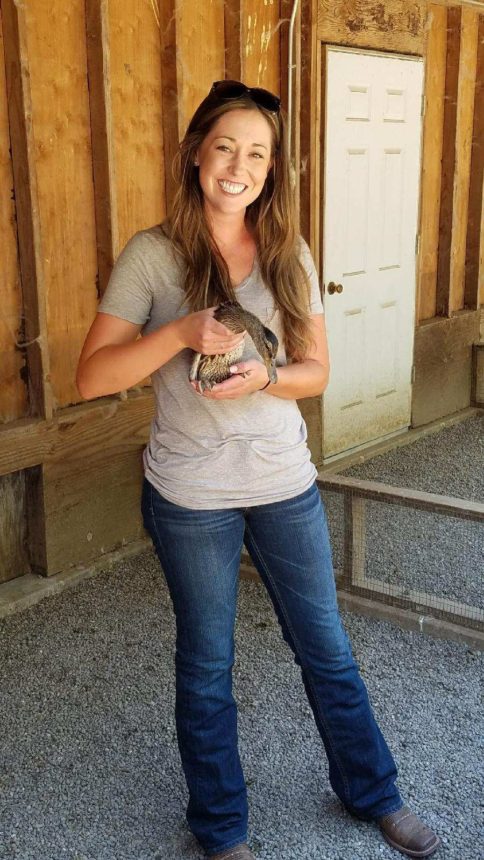
Jun 6, 2018
Molina: New to waterfowl, but deep roots in ag

Chelsea Molina
California Waterfowl's newest addition – Director of Development Chelsea Molina – has deep roots in California agriculture and is a recent, but passionate, arrival to the world of waterfowl.
We asked her about how her passions led her to CWA, where she will be responsible for the strategy, development and implementation of our comprehensive advancement program to increase resources needed to support CWA’s mission and objectives.
Q: What made you decide to focus on agriculture in your career?
A: I was involved with Future Farmers of America in high school at Elk Grove High School (Elk Grove, California) and had AMAZING ag teachers and advisors. I was on the officer team for two years, showed hogs, won a National Agriscience Fair and participated in several career development events, including one in marketing. With that event, we were able to compete at State Finals located at Cal Poly, San Luis Obispo. After visiting the campus, I knew I had to go there.
In 2013, I earned a bachelor of science degree in agricultural communications and a minor in agricultural business. Under my minor, I took a few policy classes and found a new interest, which pushed me toward an internship in Washington, D.C., with the National Council of Farmer Cooperatives in 2012 during the height of the Farm Bill debates.
While I was in D.C., I noticed that it seemed like California was the forgotten child, especially when it came to California agriculture. This guided me to pursue a career in advocacy. I worked for the California Farm Bureau Federation for five years and focused on advocacy efforts, in addition to overseeing their political action committees and political affairs activities, including political fundraising and event planning.
Q: How did you get into hunting?
A: I grew up in a family that came together by being outdoors, whether it was boating, camping or fishing, so I was instilled with a natural love for the outdoors early on. The guys in my family were always into hunting, but I never got an opportunity to go out and see what hunting was all about until 2016.
One afternoon that duck season, a friend wanted to go check out his blind during the evening for the first time and I had nothing better to do after work so I decided to go along. At the time, the only camo or brown item I owned happened to be a CWA hat, so I proudly threw that on, thinking I was so cool to at least own that. Then I borrowed some waders and layers and we hit the road.
Since it was so late in the afternoon, we just threw out a couple decoys and called it good. It didn’t take long before the magic happened. The sun had the most beautiful reflection on the water and on top of that, a couple dozen specks were flying in. My friend worked the birds but they didn’t quite get to our blind before they whiffled down one field over and then they just kept dropping in there.
I went out one more time for the 2016-17 season to give the early morning adventure a shot and see if I could hang in the cold early hour. That time was even more exciting as I was put to task to set up all the decoys, and there was a lot of bird activity with good shot opportunities throughout the morning. My friend ended up hitting the speck limit early, and I even acted as the bird retriever. Looking back, I was just free labor, but we all have to learn somehow!
At that point I knew I couldn’t just sit back and go “birding” anymore. I wanted to be in on the action and actually hunt. My little brother and I ended up going to complete our hunter education class together, which made the process even more enjoyable.
Q: Once you tried it, what made you like it?
A: Once I got my license, the first time I actually hunted was at the Sacramento National Wildlife Refuge. I got a good draw and was able to pick a fairly decent blind for the day. It was supposed to be a windy day, so we set up what felt like 500 bags and more than a couple dozen decoys.
After dragging all those decoys out over a mile and wading through the water, I asked, “Why do you guys do these refuge hunts when you have a blind you can practically drive up to?” I quickly learned why: The rest of the morning at Sac Refuge was one of the most spectacular sights I’ve ever seen with the early morning sunrise, thousands of birds flying overhead and the sound of a large grind of geese one pond over. It was like nothing I had experienced before.
And then I got the opportunity to take my first shot. My first bird was a spoonie and for those I embarrass by saying that, I made up for it by getting a snow goose shortly thereafter. After that morning, I was hooked.

Chelsea Molina bagged her first birds – a hen spoonie and a lesser snow goose – on a hunt at the Sacramento National Wildlife Refuge.
Q: Boards tend to have members who are older or far along in their careers, but you serve the board of the Sacramento County Foundation for Agriculture Education. Why do you think it's important for young people to get involved in issues that are important to them?
A: Going through a program like FFA growing up and then going to work for a non-profit taught me early on in my career that you can’t just sit back and expect change or be able to influence if you’re not involved. If you aren’t happy with the way something is going, you have to engage.
Engaging looks different for everyone and you don't necessarily have to serve on a board. You can start by just becoming a member of an organization like CWA and let the organization do the work it does best on your behalf. You will find that organizations like this tend to provide you with enough resources that allow you to engage in the next level, whether through social media, telling your hunting or conservation stories or by talking face to face with people. Once you engage in these ways, it tends to lead to the next level.
(Note: She's right! CWA's next-level opportunities include signing up for eNews and Voter Voice action alerts here, and for volunteer opportunities here.)
Q: What appealed to you most about working for California Waterfowl in particular?
A: My family has been involved with CWA, but the first time I was truly exposed to the organization was through Farm Bureau’s Young Farmers & Ranchers program. I went on a tour up in the Butte Sink and saw firsthand the work CWA was doing with the Egg Salvage program and I admired the strong conservation efforts and the messaging of the programs tied with hunting.
And as I mentioned above, since I went on my first hunt, I’m hooked.

One of the first things Molina got to do as part of her job responsibilities at CWA was to visit the Rancho Esquon hatchery, which is one of CWA's Egg Salvage partners. There she was able to help band and release ducklings that had been spared in the face of imminent nest destruction as part of normal agricultural processes.


